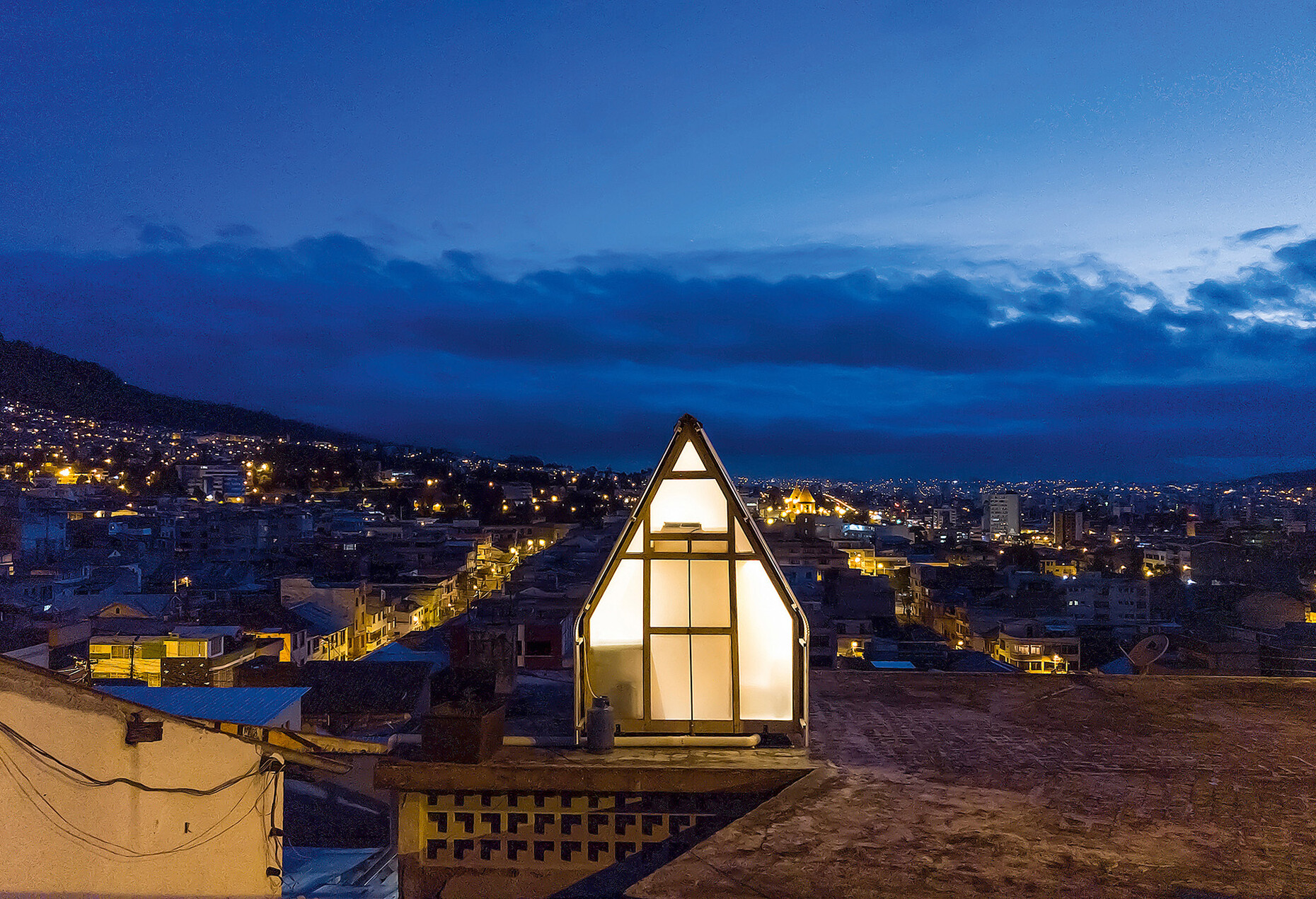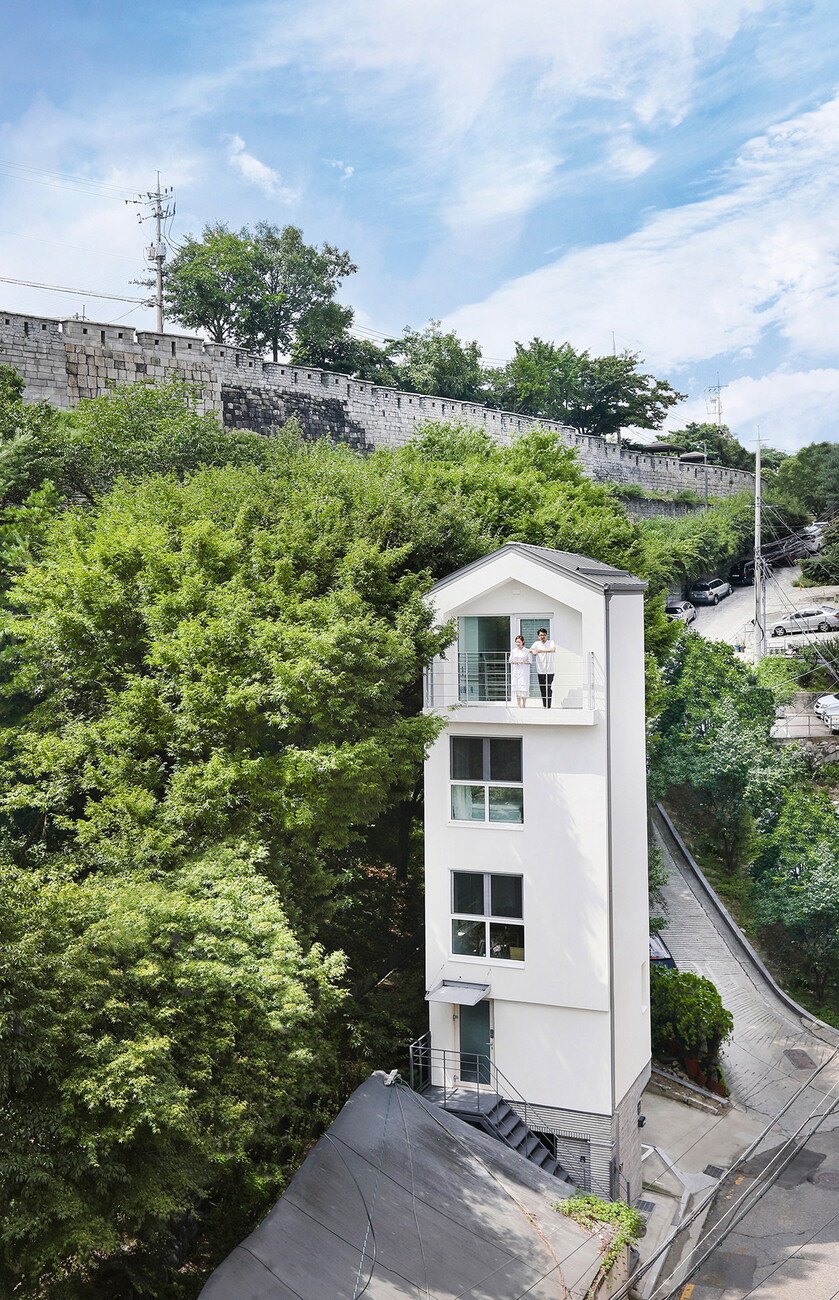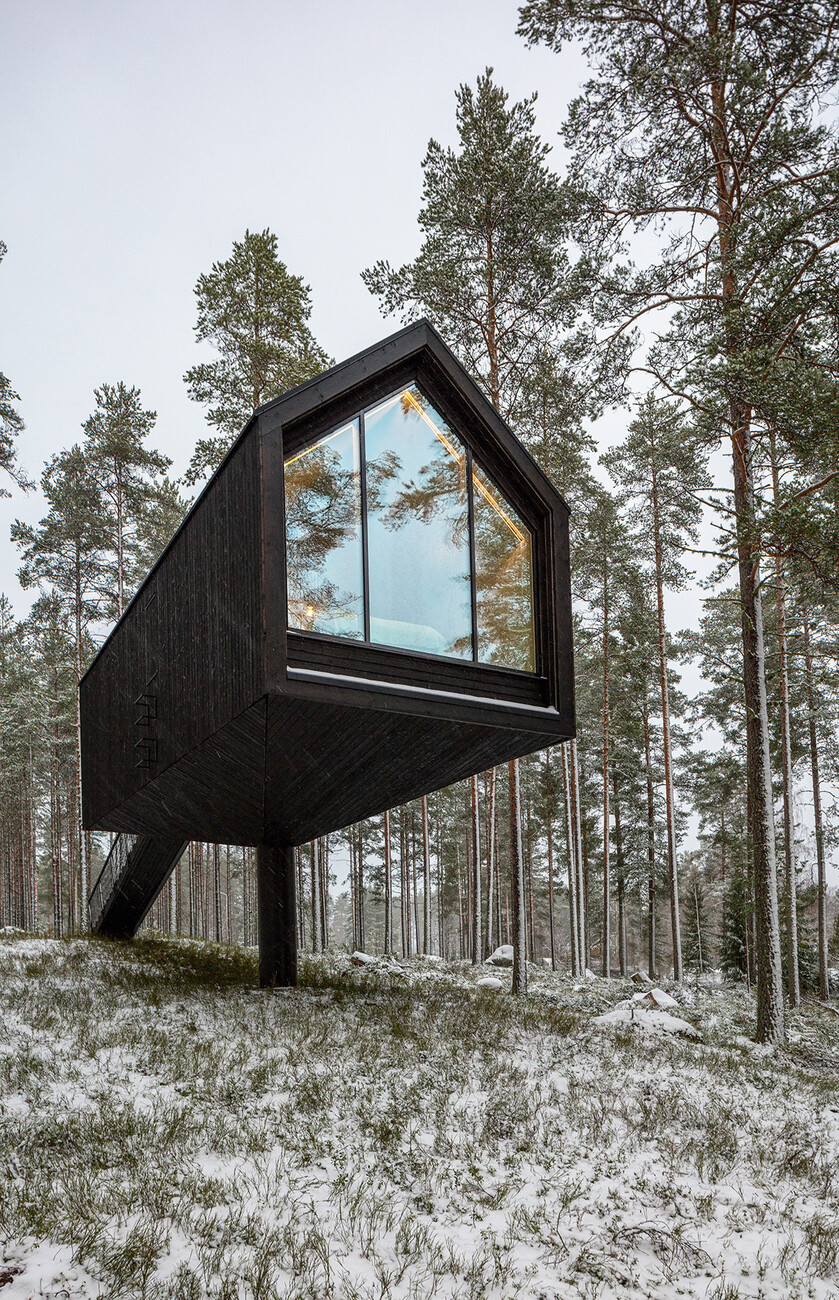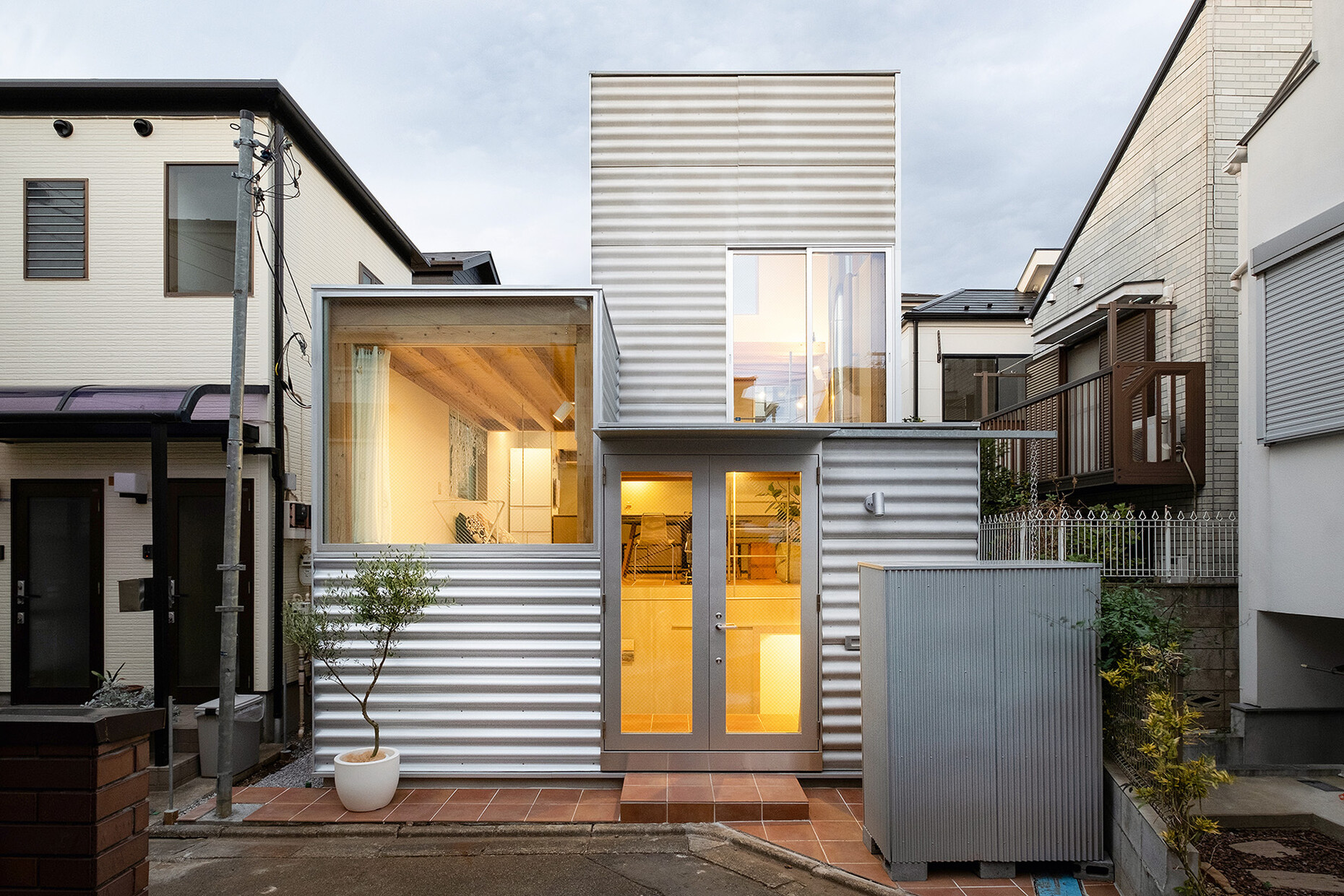MICROLIVING
Small houses, big book
Rarely has a book counteracted its own theme as grandiosely as this one, solely through its format. “Small Houses”, after all, is an attempt by the Taschen publishing house and its editor Philip Jodidio to present small houses as a sign of a more modest way of life and thus of a more ecological footprint for one’s own existence on our limited planet. However, the book doesn’t seem to care about any of that whatsoever. It is a true colossus, with an oversize format of 25.2 by 37.8 centimeters, a thickness of 4.5 centimeters, and 424 pages, weighing in at a full 3.5 kilos. So how big might the book’s ecological footprint be in terms of production and transport? You need a pretty sturdy coffee table on which to open it. In other words, if you actually lived in one of the “small houses” presented here, you would probably have considerable problems getting this book inside in the first place.
The selected houses in the book are then presented in the kind of visual quality you would expect. A full 57 examples from all over the world are gathered together and, sorted alphabetically according to the name of the architectural firms, take us on an erratic and thus varied trip around the world. From the Brazilian rainforest, we hop without further ado to the Swiss mountains, a Portuguese olive grove, or the steep Chilean coast. All the houses are indeed “small”. None of them offers more than 100 square meters of living space, and most are considerably smaller. The “Bolder Sky Lodges” are a group of two-story wooden towers set on individual circular columns in the cliffs above Norway’s Lysefjord. Each floor has 11 square meters, enough for a living room with kitchen downstairs and two bedrooms and a bathroom upstairs. The two “Olive Houses” on Mallorca, inserted into the existing stone wall of an olive grove, are little more than minimal cave dwellings – albeit pretty fancy ones. And the “Dark Room” is a shimmering black, one-room home of just 10 square meters (plus terrace) which, with its long, steel, stilt-like legs, may seem to its guests like a strange insect in the Dutch forest – or a particularly futuristic hunter’s lookout.
Sustainability really has no place here…
They are breathtaking, many because of their architecture, but often also because of the unspoiled landscapes around them. Some houses are so isolated that you wonder how you would even get there to start your vacation. At some point, though, you stop to think: The majority of the examples presented are pure vacation homes. There are also bona fide hotel lodges, such as the “Paradinha” in Alvarenga in northern Portugal, which is divided into pavilions of 28 to 58 square meters (what a landscape!), or the wooden towers of the Breitenbach Landscape Hotel in France (what a view!). Up to this point, the book turns out to be a simple coffee-table tome, where you can find out about the next ultra-chic spot to spend your vacation in a drastically reduced space. If the internet link under each project description weren’t there, then it would simply resemble a particularly thick, particularly lavishly produced TUI catalog.
As you read your way through it, however, any thoughts of sustainability prove to be merely hot air. After all, living in a small, chic cabin in the woods for a few days is neither particularly original nor innovative, and it’s certainly not sustainable. In his introductory essay – the only longer text in the book – Philip Jodidio can very well make as many contortions as he likes to accommodate the maximum number of buzzwords from current debates, blithely linking his selection of projects to the “tiny house” movement and citing rising population growth as a good argument for putting the square footage of one’s own home under the microscope. Ernst Friedrich Schumacher’s “Small Is Beautiful” and Mies van der Rohe’s “Less is More” are invoked as mighty precedents, and even Le Corbusier’s famous Cabanon hut on the French Riviera is called upon to serve as a reference – unintentionally fitting, since Le Corbusier never lived in it for any length of time. Indeed, he didn’t even plan to have a kitchen in it, because just around the corner was the restaurant “L’Etoile de Mer,” where the maestro used to eat. So much for rethinking one’s own lifestyle in a small home. And here the words from Jodidio’s introduction seem bizarre, to put it kindly: “This book [is] basically about the future of architecture and ... humanity. Learn to live in a smaller house, learn to use fewer resources and to be happy with what’s available.” Given the vacation homes and second homes on show here, an estimated 99 percent of humanity might well feel thoroughly mocked. Although they probably can’t afford the book either, so who cares?
…but it’s nevertheless inspiring in the end
The most irritating thing about these hypocritical attempts to seriously attach the book to any kind of sustainability debate, however, is that “Small Houses” actually doesn’t need all this nonsense. If we didn’t have to fight our way through this jungle of half-baked ideas first, our gaze would fall quite unprejudiced on a very pretty collection of the latest projects on the subject of living in tiny spaces. That in itself could have been quite enough, because this collection is indeed inspiring and well presented. Each project is documented on the extra-large pages with sufficient photos and drawings – cross-sections, site plans, floor plans, often diagrams or details of the cleverly distributed functions – more comprehensively than is the case in many other reference books.
And indeed, the collection includes some decidedly ingenious solutions for small-space architecture. This applies to both the vacation homes and the few genuine full-time dwellings in the collection: the “Starter Home” for 200,000 euros in New Orleans, for example, or the “Keret House” in Warsaw, one of the narrowest houses in the world with an incredible width of just 133 centimeters, squeezed between two existing houses. But it would be good to point out the differences: Keret House was an artistic experiment from the beginning. It was built by an art foundation and named after its first occupant, the Israeli artist Etgar Keret, who reported on his extreme living experiences in this house in the Neue Zürcher Zeitung in 2012. The house is an interesting architectural study – and a relevant living experience, too – but it is not a model for permanently reduced, sustainable living. And the truly beautiful “Love2 House” in Tokyo is not only impressively small at 19 square meters, but also particularly lovely and bright with its towering skylight in a velvety exposed concrete look. The sliding door to the small front garden rounds off the picture perfectly – although it is worth knowing that this is the second home of an architecture professor who constantly commutes to Tokyo and not a permanently inhabited dwelling.
Thus, not only are the places from all over the world whisked into a single, colorful frenzy in the book, but also the mix of different tasks that the small houses have to fulfill is so devoid of categorization that everything threatens to become one sauce. This indiscriminate mixing and blurring is a shame, as is the superfluous sustainability dressing splashed on top. If we could rid ourselves of both, then the book could become a real source of inspiration for designing incredibly compact living spaces in a wide variety of shapes and colors.
Yet the question remains as to how this book is supposed to fit into one of the houses presented here. From time to time, a coffee table is visible in one of the photos, but nowhere a bookshelf. So if you want to accommodate a larger library in a small house, there’s probably only one option: witchcraft, Harry Potter-style. In any case, “Small Houses” is not available as an e-book.

Small Houses. Homes for our Times
Publisher: Philip Jodidio
Hardcover
24.6 x 37.2 cm
Edition: German, English, French
424 pages
Taschen Publishing
ISBN 978-3-8365-8701-3
60 euros










